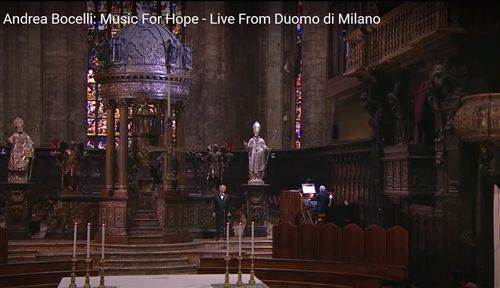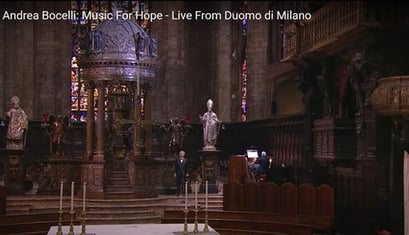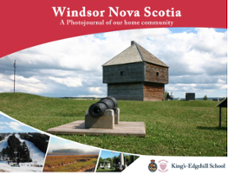Inside King's-Edgehill School

They ran both together
 Just as we buried ourselves in the Passion of Christ during Holy Week, so now we run in the Resurrection of Christ. The classic Easter Gospel is all about running. Mary Magdalene coming to the tomb in the early morning finds the stone taken away from the sepulchre and runs to Simon Peter and John. “They ran both together,” John tells us in his Gospel, to the tomb. The Resurrections sets us in motion.
Just as we buried ourselves in the Passion of Christ during Holy Week, so now we run in the Resurrection of Christ. The classic Easter Gospel is all about running. Mary Magdalene coming to the tomb in the early morning finds the stone taken away from the sepulchre and runs to Simon Peter and John. “They ran both together,” John tells us in his Gospel, to the tomb. The Resurrections sets us in motion.The Resurrection is the fruit of the Passion, we might say, but there is the paradox that, in a way, the Passion comes out of the Resurrection. How? It is only in the light of the Resurrection that the Passion accounts come to be written. “Herein is love,” we must say about both the Passion and the Resurrection. “Never that which is shall die,” as Euripides says. Such is the love of God which now moves in us. Such is the radical nature of the Resurrection. It changes our perspectives. It changes our thinking about death and suffering; just, perhaps, it can speak to us in our current fears and worries.
I cannot think this Easter Gospel except in its juxtaposition with Mark’s account of the Marys coming to the empty tomb and encountering “a young man,” an angel, whose words to them and to us belong to the joy of the Easter Proclamation. “Be not afraid,” they are told. “Ye seek Jesus of Nazareth which was crucified: he is risen.” Christ is Risen. Alleluia! Alleluia! The Lord is Risen indeed. Alleluia! Alleluia! This is the ancient Christian greeting. Something has changed. Death is no longer the end of the road, the terminus ad quem of human life; it has become a means to an end, a transitus. Death itself is changed. Such is the great dynamic of the Resurrection. But in what is known as the shorter end of Mark’s Gospel, he says that “they fled from the tomb… for they were afraid.” Are we running away in fear or are we running in the path of learning and joy?
The stories of the Resurrection show the dawning awareness on the part of the disciples about the Resurrection. It is a process of learning, of seeing things in a new way, a way that does not deny the past of suffering, sorrow, sin, and death but instead shows us a way of thinking through those realities. We are learning the lessons of love. Love sets us in motion towards one another because it is the motion of God’s love in us. God’s love runs in us. That connects us even when we seem separate and isolated from one another. There is the greater connection of prayer and thought. It happens when we are running in the path of learning. Such is the real purpose and meaning of a school as a place of learning, of care and compassion, of love and service.
The season of Easter shows us how the idea of the Resurrection comes to birth in us. And no story shows us that process of learning better, perhaps, than the story of Christ on the Road to Emmaus which we read in Chapel Thursday and Friday. In a way, it too is about running! Christ, we might say, runs out after us. Two disciples are fleeing Jerusalem in confusion and dismay, in fear and uncertainty, their hopes and aspirations utterly destroyed by the events of the crucifixion and by the perplexing news of the empty tomb, of the witness of angels and women.
Jesus “drew near and went with them,” Luke tells us, but they didn’t recognise him. After all, they weren’t expecting him. How do we come to know ourselves and one another? How do we come to know the things that are wanted to be known? Here Jesus runs out after us to engage us in dialogue.
Jesus, first of all, draws out of them their fears and anxieties. They tell him exactly what had happened and what they had hoped for. Only then, “beginning at Moses, and all the prophets, he expounded unto them in all the Scriptures the things concerning himself.” He opens their minds to the understanding of the Scriptures. In other words, he teaches them. Ideas are brought to birth in them. Wonderful. Yet, as Luke shows us, it is not only words spoken and heard but words enacted and seen that belong to our learning. It is only when Jesus stays with them and takes bread, blesses it, and breaks it and gives it to them, that they know him. In other words, his actions remind them of the very night of his betrayal and of his last supper with them. “Their eyes were opened, and they knew him.” Words and deeds together; a word in action.
It sets them in motion; it sets them running back to Jerusalem, back to the place of their fears and broken hopes, back to the other disciples huddled in fear. They are changed. They tell the others “what things were done in the way, and how he was known of them in the breaking of the bread.” And all because Christ runs out after us to teach us the things that matter most. They are the things of love for love sets us in motion towards one another. Love connects us and brings us together even when we seem most apart.
Andrea Bocelli, the great Italian tenor, gave the world a wonderful concert of song in the empty Duomo of Milan at Easter. Italy has suffered greatly from the Covid-19 outbreak. At Easter, he said, “we celebrate the trust in a life that triumphs.” “I believe,” he said, “in the strength of praying together. I believe”, he said, “in the Christian Easter, a universal symbol of rebirth that everyone, whether they are believers or not, truly needs right now.” His music was an Easter gift of song and love, of prayer and care in the midst of our wounded world. Please click here for the video. Such is the power of the Resurrection. Amazing grace. It sets us in motion; running towards one another in love and not away from one another in fear.
In prayer we place one another and our world with God, the God who runs out after us to gather us into his love. Such is joy even in times of sorrow. It sets us running in the path of learning.
Our hometown is the perfect location for you to go to school. It is a safe community that is alive with many recreation activities for all seasons.







